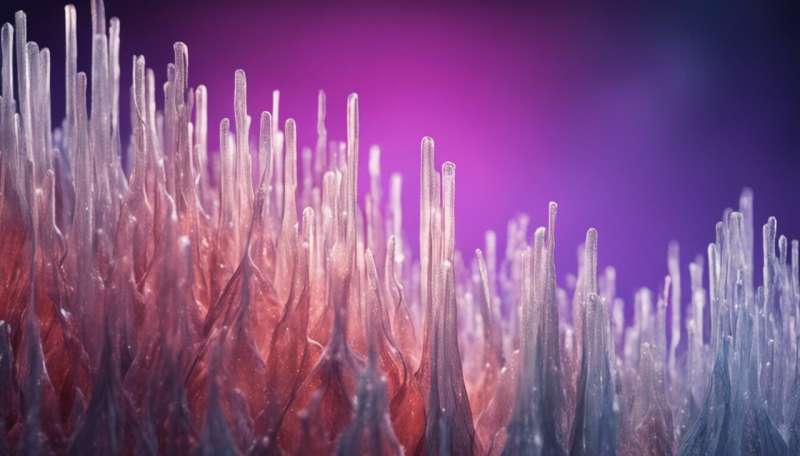Biomaterials: Hydrogel fibers make tissue generation efficient

Much research has been devoted to generating viable tissues to replace damaged tissues in organs, such as the liver. Incorporating cellular and vascular networks into engineered tissues increases the potential of the biomaterial to integrate successfully with the host body. However, this step, known as prevascularization of constructed tissues, is expensive, complicated and time-consuming.
Now, Andrew Wan, Jackie Y. Ying and co-workers at the A*STAR Institute of Bioengineering and Nanotechnology in Singapore have developed a quick and effective way to generate prevascularized liver and fat tissues using newly designed hydrogel fibers. The hydrogel, which is used at room temperature, acts as a vital source of nutrients for the cells, allowing them to survive longer as the engineered tissue integrates into the host's body.
"Many tissues in the body, such as the liver, are made up of repeating functional units," explains Wan. "We carefully constructed tissues by embedding cells into individual hydrogel fibers in set repeating patterns, just as they appear in the body. We then built up the fibers into tissue structures. Previous work in this field has lacked this three-dimensional cell patterning."
The researchers incorporated different kinds of cells into individual samples of hydrogel solution. They used samples encapsulating blood vessels or endothelial cells as the basis for building the tissue structures. The efficiency of hydrogel fiber formation allowed the team to draw cell-filled fibers from the gel samples quickly and easily. Next, they surrounded the fibers containing endothelial cells with fibers patterned with other cell types, such as primary liver cells. This method ensured a more natural pattern to the cell constructs than those engineered by other researchers.
"Many cell types have the capacity to self-assemble," states Wan. "Endothelial cells form capillary-like structures that run parallel to the other cells in our engineered tissues."
When Wan, Ying and co-workers implanted the engineered tissues into mice, they found that the endothelial cells in the engineered tissues rapidly connected with the blood vessels of the host. Consequently, the cells had rapid access to oxygen and nutrients from the blood circulation of the host and could therefore successfully integrate with existing tissue in the body.
"Our method could be used to make three-dimensional tissue models for drug screening, toxicity studies or studying disease mechanisms," explains Ying. "In the long term, the approach could also be used for cell-based therapy to replace lost or damaged tissue. Our future work will be geared towards these applications."
More information: Leong, M. F., Toh, J. K. C., Du, C., Narayanan, K., Lu, H. F. et al. "Patterned prevascularised tissue constructs by assembly of polyelectrolyte hydrogel fibres." Nature Communications 4, 2353 (2013). dx.doi.org/10.1038/ncomms3353
Journal information: Nature Communications


















